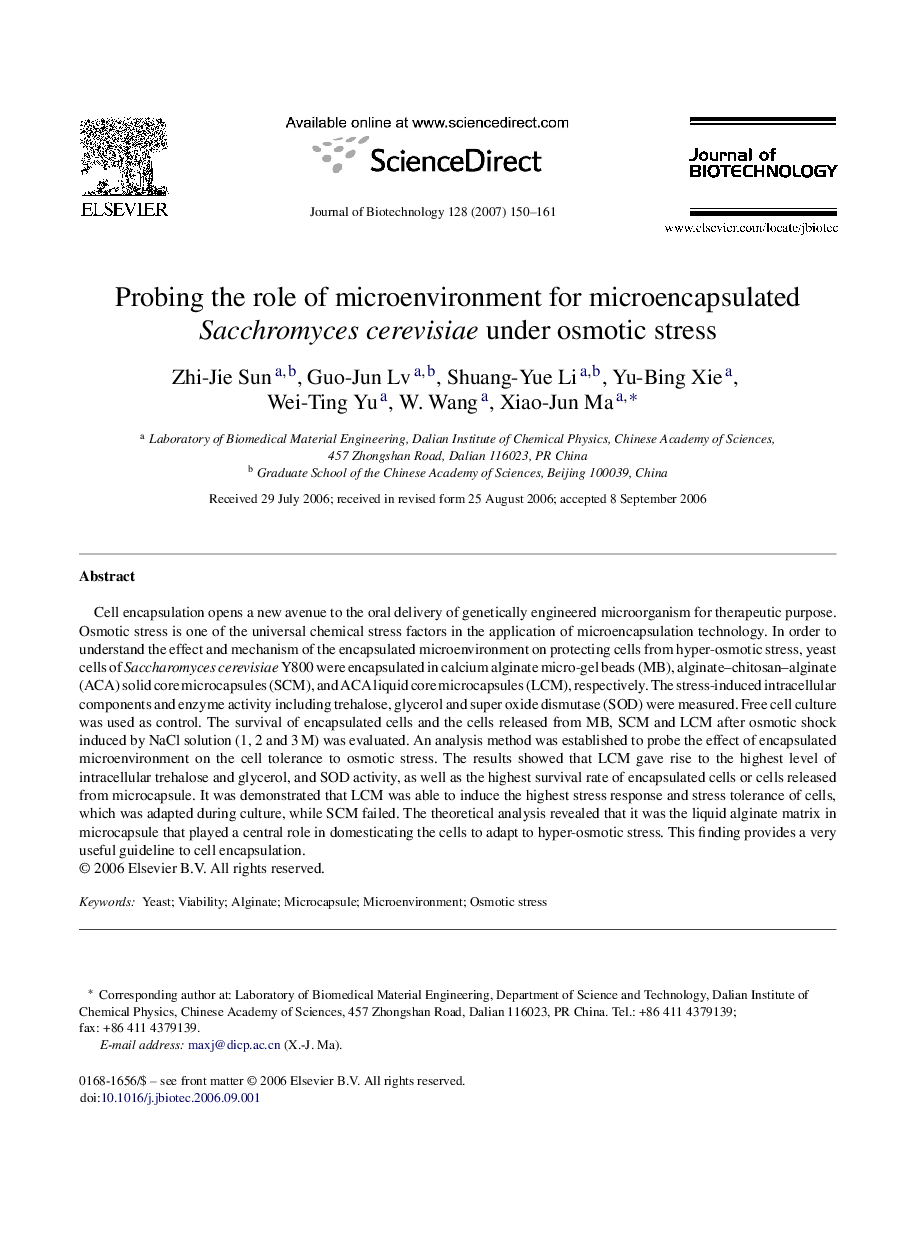| Article ID | Journal | Published Year | Pages | File Type |
|---|---|---|---|---|
| 25426 | Journal of Biotechnology | 2007 | 12 Pages |
Cell encapsulation opens a new avenue to the oral delivery of genetically engineered microorganism for therapeutic purpose. Osmotic stress is one of the universal chemical stress factors in the application of microencapsulation technology. In order to understand the effect and mechanism of the encapsulated microenvironment on protecting cells from hyper-osmotic stress, yeast cells of Saccharomyces cerevisiae Y800 were encapsulated in calcium alginate micro-gel beads (MB), alginate–chitosan–alginate (ACA) solid core microcapsules (SCM), and ACA liquid core microcapsules (LCM), respectively. The stress-induced intracellular components and enzyme activity including trehalose, glycerol and super oxide dismutase (SOD) were measured. Free cell culture was used as control. The survival of encapsulated cells and the cells released from MB, SCM and LCM after osmotic shock induced by NaCl solution (1, 2 and 3 M) was evaluated. An analysis method was established to probe the effect of encapsulated microenvironment on the cell tolerance to osmotic stress. The results showed that LCM gave rise to the highest level of intracellular trehalose and glycerol, and SOD activity, as well as the highest survival rate of encapsulated cells or cells released from microcapsule. It was demonstrated that LCM was able to induce the highest stress response and stress tolerance of cells, which was adapted during culture, while SCM failed. The theoretical analysis revealed that it was the liquid alginate matrix in microcapsule that played a central role in domesticating the cells to adapt to hyper-osmotic stress. This finding provides a very useful guideline to cell encapsulation.
